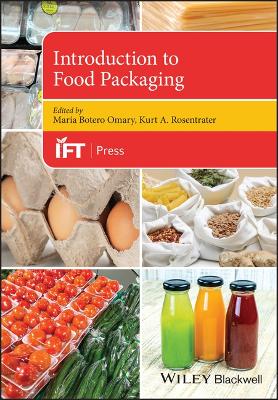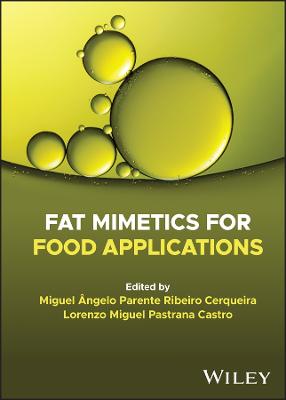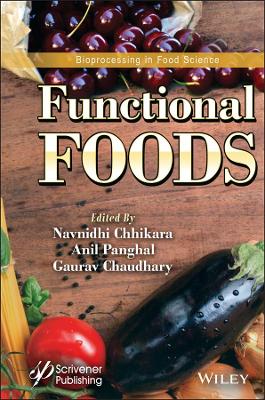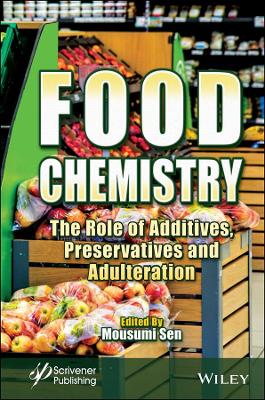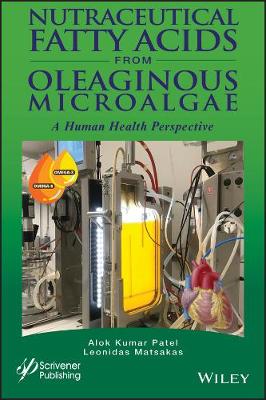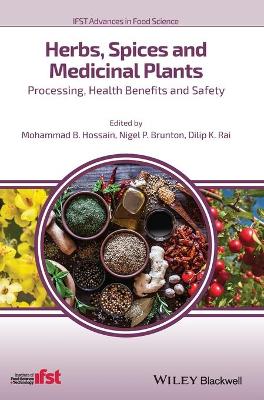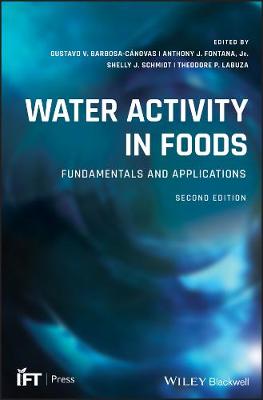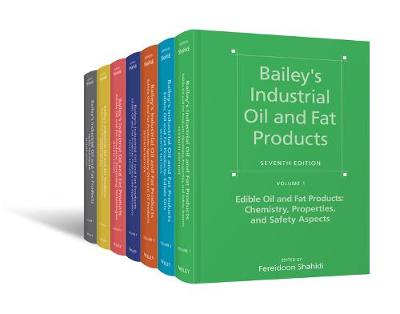Freeze Drying of Food Products
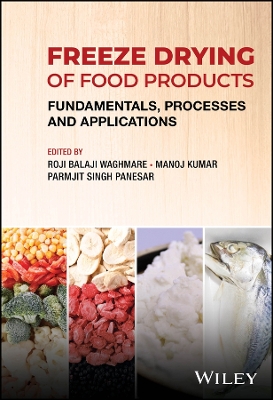 -15%
portes grátis
-15%
portes grátis
Freeze Drying of Food Products
Fundamentals, Processes and Applications
Waghmare, Roji Balaji; Kumar, Manoj; Panesar, Parmjit Singh
John Wiley & Sons Inc
02/2024
304
Dura
Inglês
9781119982067
15 a 20 dias
Preface xvi
Acknowledgments xviii
1 Freeze- Drying: Basic Principles and Processes 1
Roji Balaji Waghmare, Manoj Kumar, and Parmjit Singh Panesar
1.1 Introduction 1
1.2 Principle of FD Process 3
1.2.1 Freezing of Raw Material 4
1.2.2 Primary Drying - Sublimation 4
1.2.3 Second Drying - Desorption 5
1.3 Basic Components of a Typical Freeze- Dryer System 5
1.4 Types of FD Processes 7
1.4.1 Vacuum FD 7
1.4.2 Atmospheric FD 8
1.4.3 Spray FD 9
1.5 Characterization of FD Samples 11
1.5.1 Color 11
1.5.2 Moisture 12
1.5.3 Scanning Electron Microscopy 12
1.5.4 Thermal Analysis 13
1.5.5 Rehydration Characteristics 14
1.6 Applications of FD in Food Processing 14
1.6.1 Fresh Produce 15
1.6.2 Animal Products 16
1.6.3 Dairy Products 16
1.6.4 Miscellaneous Applications 17
1.7 Advantages of FD 17
1.8 Limitations of FD 23
1.9 Commercial Status 23
1.9.1 Technological Applications in Food 23
1.10 Conclusion and Future Perspectives 24
References 24
2 Mathematical Modeling of Freeze- Drying Process 31
Kyuya Nakagawa
2.1 Introduction 31
2.2 Principle of Freeze- Dryer 32
2.2.1 Vacuum Freeze- Drying 32
2.2.2 Atmospheric Freeze- Drying 34
2.2.3 Water Vapor Transfer in Freeze- Dryer 36
2.3 Mathematical Model for Freezing 39
2.3.1 Thermal Balance during Freezing 39
2.3.2 Examples of Simulation Results 41
2.4 Mathematical Expression of the Progress of Freeze- Drying 47
2.4.1 Primary Drying 47
2.4.2 Secondary Drying 50
2.4.3 Practical Approach for Modeling of Freeze- Drying 51
2.5 One- Dimensional Model (r P -k V Model) 52
2.6 Three- Dimensional Model (K cc Model) 55
2.6.1 Case Classification of Freeze- Drying under Radiative Heat 55
2.6.2 Radiative Heat to Product 56
2.6.3 Radiative Heat to Tray 57
2.6.4 Conductive Heat Transfer in the Frozen and Dried Layers 58
2.6.5 Three- Dimensional Model (K cc Model) - Water Vapor Transfer 60
2.6.6 Parameter Estimation by Ice Sublimation Test 62
2.6.7 Estimation of Essential Surface Area 63
2.6.8 Simulation Result Example 64
2.7 Conclusion 66
References 68
3 Freeze Drying of Fruits and Vegetables 73
Yogesh Kumar and Rajat Suhag
3.1 Introduction 73
3.2 Physical Characteristics of Freeze- Dried Fruits and Vegetables 74
3.2.1 Color 74
3.2.2 Shrinkage 75
3.2.3 Rehydration Capacity 77
3.2.4 Microstructure 78
3.3 Biochemical Characteristics of Freeze- dried Fruits and Vegetables 80
3.3.1 Antioxidant Activity 80
3.3.2 Polyphenols 82
3.3.3 Ascorbic Acid 83
3.4 Freeze Drying for Encapsulation 89
3.5 Applications of Freeze- dried Fruits and Vegetables 94
3.6 Advantages and Disadvantages of Freeze Drying 97
3.7 Conclusion 98
References 98
4 Freeze- Drying of Meat and Seafood Products 105
Ruben Agregan, Noemi Echegaray, Paulo E.S. Munekata, Manoj Kumar, Ruben Dominguez, Mirian Pateiro, and Jose M. Lorenzo
4.1 Introduction 105
4.2 Principles of Freeze- Drying Technology 107
4.3 Effect of Freeze- Drying on the Sensory Attributes of Meat and Seafood Products 108
4.3.1 The Challenge of Imitating Fresh Meat 109
4.3.2 The High Opportunities of Freeze- Drying in Seafood 111
4.4 Stability of Freeze- Dried Meat and Seafood Products 114
4.4.1 Advantages and Disadvantages in the Preservation of Meat by Freeze- Drying 116
4.4.2 Suitability of Freeze- Drying to Stabilize Seafood Products 117
4.5 Conclusions 120
Acknowledgments 120
References 120
5 Freeze- Drying of Dairy Products 127
Suchismita Roy and Gunvantsinh Rathod
5.1 Introduction 127
5.2 Application of Freeze- Drying in Different Dairy Products/ Ingredients 128
5.2.1 Milk 128
5.2.2 Cheese 129
5.2.3 Yogurt 129
5.2.3.1 Rehydration of Freeze- Dried Yogurt 130
5.3 Application of Freeze- Drying of Other Dairy Products 130
5.3.1 Lactic Acid and Other Cultures 130
5.3.1.1 Different Cryoprotectants Used During Freeze- Drying 134
5.3.2 Application of Freeze- Drying on Colostrum 134
5.3.3 Application of Freeze- Drying on Lactoferrin 135
5.4 Spray Freeze- Drying 137
5.4.1 Parameter of Spray Freeze- Drying 137
5.4.1.1 Several Stages Are Involved in Atomizing the Product During Spray Freeze- Drying 137
5.4.1.2 Freeze- Drying 138
5.5 Advanced Freeze- Drying Methods 139
5.5.1 Infrared Freeze- Drying 139
5.5.2 High- Pressure Freeze- Drying 142
5.5.3 Microwave Freeze- Drying (MWFD) 142
5.6 Conclusion 143
References 144
6 Freeze- Drying of Probiotics for the Incorporation in Functional Foods: Drying Process, Viability, and Powder Properties 153
Yasemin S?. Kuecuekata, Hatice E. Kirtil, and Ertan Ermis?
6.1 Introduction 153
6.2 Functional Foods 154
6.3 Cultivation and FD of Probiotics 157
6.4 Protection of Probiotics During FD 159
6.5 Stability and Viability Assessment After FD 161
6.5.1 Factors Affecting Survival and Stability 162
6.5.2 Protective Agents to Improve Viability 163
6.6 Properties of Freeze- Dried Probiotic Powders 165
6.6.1 Comparison of Spray- Dried and Freeze- Dried Probiotic Powders 167
6.7 Rehydration of Freeze- Dried Probiotics 169
6.8 Conclusion and Future Trends 170
References 170
7 Freeze- Drying Effect on Nutrients and Their Stability 179
Yogesh Gat and Papiha Gawande
7.1 Introduction 179
7.1.1 Food Quality Changes During Drying of Food 180
7.1.2 Freezing Process 181
7.1.3 Combined Application of Different Freeze- Drying Methods 182
7.1.3.1 Microwave- assisted Freeze Drying (MD- FD) 183
7.1.3.2 Foam- mat Freeze Drying (FM- FD) 183
7.1.3.3 Far- infrared Radiation- assisted Freeze Drying (FIR- FD) 183
7.2 Vitamin 183
7.3 Minerals 189
7.3.1 Microminerals 189
7.3.2 Macro- minerals 190
7.4 Bioactive Compounds 191
7.4.1 Antioxidant Activity 194
7.4.2 Anthocyanin 196
7.4.3 Carotenoids 196
7.5 Future Perspective 197
7.6 Conclusion 198
References 198
8 Packaging of Freeze- Dried Products 203
Tanuva Das, Donald Lyngdoh Nonglait, Devraj Rajput, and Shalini S. Arya
8.1 Introduction 203
8.2 History of Freeze- Dried Foods 205
8.3 Industrial Process of Freeze Drying 205
8.3.1 Pre- Treatment Methods of Various Foods Before Freeze- Drying 207
8.3.1.1 Blanching 207
8.3.1.2 Osmotic Dehydration (OD) 208
8.3.1.3 Pulsed- Electric Field (PEF) 208
8.3.1.4 Ultrasound (US) 209
8.4 Need for Good Packaging for Freeze- Dried Food Products 209
8.4.1 Microbial Quality 209
8.4.2 Chemical Quality 210
8.4.3 Nutritional Quality 210
8.4.4 Influence of Storage Quality 211
8.5 Selection of Packaging Material 211
8.5.1 Water Vapor Transmission Rate (WVTR) 211
8.5.2 Gas Transmission Rate 211
8.5.3 Tensile Strength and Elongation 211
8.5.4 Tear Strength 212
8.5.5 Heat Seal Strength 212
8.5.6 Performance Properties 212
8.6 Types of Packaging for Freeze- Dried Foods 213
8.6.1 Modified Atmosphere Packaging (MAP) 213
8.6.2 Flexible Packaging 215
8.6.3 Shrink Film 216
8.6.4 Cardboard Packaging 216
8.6.5 Wax- Coated Cardboard 216
8.6.6 Edible Films 216
8.6.7 Cans and Glass Jars 217
8.7 Quality Consideration During Packaging 218
8.8 Case Studies of the Packaging of Freeze- Dried Food Products 219
8.8.1 Packaging of Strawberries 219
8.8.2 Packaging of Sour Cherries 219
8.8.2.1 Packaging of Accelerated Freeze- Dried Fish Products 219
8.9 Market Scenario 220
8.9.1 Asia- Pacific 220
8.9.2 European Market 220
8.9.3 Freeze- Dried Food Market: Recent Developments 221
8.10 Sustainability Aspects 222
8.11 Safety Aspects of Freeze- Dried Product Packaging 222
8.12 Principal Instrumental Techniques Employed for Packaging Controls 224
8.12.1 Spectrophotometry 224
8.12.2 Thermal Analysis Techniques 224
8.12.3 Gas Transmission Analysis 224
8.13 Conclusion and Future Scope 224
References 225
9 Advances in Freeze Drying to Improve Efficiency and Maintain Quality of Dehydrated Fruit and Vegetable Products 229
Swati Sharma, Kalyan Barman, Hare Krishna, Surya N. Chaurasia, and Arun S. Mujumdar
9.1 Introduction 229
9.2 Challenges in Freeze Drying 231
9.2.1 Enhancement of Drying Kinetics 231
9.2.2 Energy Intensity Reduction 231
9.2.3 Scale- Up and Technical Transfer 232
9.3 Novel Freeze Drying Systems 233
9.3.1 Infrared- Assisted Freeze Drying 233
9.3.2 Microwave- Assisted Freeze Drying 234
9.3.3 Ultrasound- Assisted Freeze Drying 238
9.4 Conclusion and Future Prospects 248
References 248
10 Commercial Applications of Freeze Drying in Food Processing 255
Shiv Kumar, Rahul Mehra, Mouandhelmamou Hassani, Anuradha Mishra, and Arun Kumar Pandey
10.1 Introduction 255
10.2 Commercial Applications of Freeze- Dried Products 257
10.2.1 Food Industry 257
10.2.2 Dairy Industry 259
10.2.3 Other Industry 259
10.3 Cost Analysis of Freeze- Dried Food Products 260
10.4 Industries Freeze- Drying Operation 261
10.4.1 Pretreatments 261
10.4.2 Freezing 261
10.4.3 Primary Drying 263
10.4.4 Secondary Drying 264
10.4.5 Factors Affecting the Quality and Uniformity of Freeze- Dried Products 265
10.5 Industrial Freeze- Drying Device 267
10.5.1 Air Blast Freezer 267
10.5.2 Fluidized Bed Freezers 268
10.5.3 Contact Freezer 268
10.5.4 Immersion Freezer 269
10.5.5 Plate Freezer 269
10.5.6 Cryogenic Freezers 269
10.6 Future Prospects 270
10.7 Conclusions 271
References 271
Index 279
Preface xvi
Acknowledgments xviii
1 Freeze- Drying: Basic Principles and Processes 1
Roji Balaji Waghmare, Manoj Kumar, and Parmjit Singh Panesar
1.1 Introduction 1
1.2 Principle of FD Process 3
1.2.1 Freezing of Raw Material 4
1.2.2 Primary Drying - Sublimation 4
1.2.3 Second Drying - Desorption 5
1.3 Basic Components of a Typical Freeze- Dryer System 5
1.4 Types of FD Processes 7
1.4.1 Vacuum FD 7
1.4.2 Atmospheric FD 8
1.4.3 Spray FD 9
1.5 Characterization of FD Samples 11
1.5.1 Color 11
1.5.2 Moisture 12
1.5.3 Scanning Electron Microscopy 12
1.5.4 Thermal Analysis 13
1.5.5 Rehydration Characteristics 14
1.6 Applications of FD in Food Processing 14
1.6.1 Fresh Produce 15
1.6.2 Animal Products 16
1.6.3 Dairy Products 16
1.6.4 Miscellaneous Applications 17
1.7 Advantages of FD 17
1.8 Limitations of FD 23
1.9 Commercial Status 23
1.9.1 Technological Applications in Food 23
1.10 Conclusion and Future Perspectives 24
References 24
2 Mathematical Modeling of Freeze- Drying Process 31
Kyuya Nakagawa
2.1 Introduction 31
2.2 Principle of Freeze- Dryer 32
2.2.1 Vacuum Freeze- Drying 32
2.2.2 Atmospheric Freeze- Drying 34
2.2.3 Water Vapor Transfer in Freeze- Dryer 36
2.3 Mathematical Model for Freezing 39
2.3.1 Thermal Balance during Freezing 39
2.3.2 Examples of Simulation Results 41
2.4 Mathematical Expression of the Progress of Freeze- Drying 47
2.4.1 Primary Drying 47
2.4.2 Secondary Drying 50
2.4.3 Practical Approach for Modeling of Freeze- Drying 51
2.5 One- Dimensional Model (r P -k V Model) 52
2.6 Three- Dimensional Model (K cc Model) 55
2.6.1 Case Classification of Freeze- Drying under Radiative Heat 55
2.6.2 Radiative Heat to Product 56
2.6.3 Radiative Heat to Tray 57
2.6.4 Conductive Heat Transfer in the Frozen and Dried Layers 58
2.6.5 Three- Dimensional Model (K cc Model) - Water Vapor Transfer 60
2.6.6 Parameter Estimation by Ice Sublimation Test 62
2.6.7 Estimation of Essential Surface Area 63
2.6.8 Simulation Result Example 64
2.7 Conclusion 66
References 68
3 Freeze Drying of Fruits and Vegetables 73
Yogesh Kumar and Rajat Suhag
3.1 Introduction 73
3.2 Physical Characteristics of Freeze- Dried Fruits and Vegetables 74
3.2.1 Color 74
3.2.2 Shrinkage 75
3.2.3 Rehydration Capacity 77
3.2.4 Microstructure 78
3.3 Biochemical Characteristics of Freeze- dried Fruits and Vegetables 80
3.3.1 Antioxidant Activity 80
3.3.2 Polyphenols 82
3.3.3 Ascorbic Acid 83
3.4 Freeze Drying for Encapsulation 89
3.5 Applications of Freeze- dried Fruits and Vegetables 94
3.6 Advantages and Disadvantages of Freeze Drying 97
3.7 Conclusion 98
References 98
4 Freeze- Drying of Meat and Seafood Products 105
Ruben Agregan, Noemi Echegaray, Paulo E.S. Munekata, Manoj Kumar, Ruben Dominguez, Mirian Pateiro, and Jose M. Lorenzo
4.1 Introduction 105
4.2 Principles of Freeze- Drying Technology 107
4.3 Effect of Freeze- Drying on the Sensory Attributes of Meat and Seafood Products 108
4.3.1 The Challenge of Imitating Fresh Meat 109
4.3.2 The High Opportunities of Freeze- Drying in Seafood 111
4.4 Stability of Freeze- Dried Meat and Seafood Products 114
4.4.1 Advantages and Disadvantages in the Preservation of Meat by Freeze- Drying 116
4.4.2 Suitability of Freeze- Drying to Stabilize Seafood Products 117
4.5 Conclusions 120
Acknowledgments 120
References 120
5 Freeze- Drying of Dairy Products 127
Suchismita Roy and Gunvantsinh Rathod
5.1 Introduction 127
5.2 Application of Freeze- Drying in Different Dairy Products/ Ingredients 128
5.2.1 Milk 128
5.2.2 Cheese 129
5.2.3 Yogurt 129
5.2.3.1 Rehydration of Freeze- Dried Yogurt 130
5.3 Application of Freeze- Drying of Other Dairy Products 130
5.3.1 Lactic Acid and Other Cultures 130
5.3.1.1 Different Cryoprotectants Used During Freeze- Drying 134
5.3.2 Application of Freeze- Drying on Colostrum 134
5.3.3 Application of Freeze- Drying on Lactoferrin 135
5.4 Spray Freeze- Drying 137
5.4.1 Parameter of Spray Freeze- Drying 137
5.4.1.1 Several Stages Are Involved in Atomizing the Product During Spray Freeze- Drying 137
5.4.1.2 Freeze- Drying 138
5.5 Advanced Freeze- Drying Methods 139
5.5.1 Infrared Freeze- Drying 139
5.5.2 High- Pressure Freeze- Drying 142
5.5.3 Microwave Freeze- Drying (MWFD) 142
5.6 Conclusion 143
References 144
6 Freeze- Drying of Probiotics for the Incorporation in Functional Foods: Drying Process, Viability, and Powder Properties 153
Yasemin S?. Kuecuekata, Hatice E. Kirtil, and Ertan Ermis?
6.1 Introduction 153
6.2 Functional Foods 154
6.3 Cultivation and FD of Probiotics 157
6.4 Protection of Probiotics During FD 159
6.5 Stability and Viability Assessment After FD 161
6.5.1 Factors Affecting Survival and Stability 162
6.5.2 Protective Agents to Improve Viability 163
6.6 Properties of Freeze- Dried Probiotic Powders 165
6.6.1 Comparison of Spray- Dried and Freeze- Dried Probiotic Powders 167
6.7 Rehydration of Freeze- Dried Probiotics 169
6.8 Conclusion and Future Trends 170
References 170
7 Freeze- Drying Effect on Nutrients and Their Stability 179
Yogesh Gat and Papiha Gawande
7.1 Introduction 179
7.1.1 Food Quality Changes During Drying of Food 180
7.1.2 Freezing Process 181
7.1.3 Combined Application of Different Freeze- Drying Methods 182
7.1.3.1 Microwave- assisted Freeze Drying (MD- FD) 183
7.1.3.2 Foam- mat Freeze Drying (FM- FD) 183
7.1.3.3 Far- infrared Radiation- assisted Freeze Drying (FIR- FD) 183
7.2 Vitamin 183
7.3 Minerals 189
7.3.1 Microminerals 189
7.3.2 Macro- minerals 190
7.4 Bioactive Compounds 191
7.4.1 Antioxidant Activity 194
7.4.2 Anthocyanin 196
7.4.3 Carotenoids 196
7.5 Future Perspective 197
7.6 Conclusion 198
References 198
8 Packaging of Freeze- Dried Products 203
Tanuva Das, Donald Lyngdoh Nonglait, Devraj Rajput, and Shalini S. Arya
8.1 Introduction 203
8.2 History of Freeze- Dried Foods 205
8.3 Industrial Process of Freeze Drying 205
8.3.1 Pre- Treatment Methods of Various Foods Before Freeze- Drying 207
8.3.1.1 Blanching 207
8.3.1.2 Osmotic Dehydration (OD) 208
8.3.1.3 Pulsed- Electric Field (PEF) 208
8.3.1.4 Ultrasound (US) 209
8.4 Need for Good Packaging for Freeze- Dried Food Products 209
8.4.1 Microbial Quality 209
8.4.2 Chemical Quality 210
8.4.3 Nutritional Quality 210
8.4.4 Influence of Storage Quality 211
8.5 Selection of Packaging Material 211
8.5.1 Water Vapor Transmission Rate (WVTR) 211
8.5.2 Gas Transmission Rate 211
8.5.3 Tensile Strength and Elongation 211
8.5.4 Tear Strength 212
8.5.5 Heat Seal Strength 212
8.5.6 Performance Properties 212
8.6 Types of Packaging for Freeze- Dried Foods 213
8.6.1 Modified Atmosphere Packaging (MAP) 213
8.6.2 Flexible Packaging 215
8.6.3 Shrink Film 216
8.6.4 Cardboard Packaging 216
8.6.5 Wax- Coated Cardboard 216
8.6.6 Edible Films 216
8.6.7 Cans and Glass Jars 217
8.7 Quality Consideration During Packaging 218
8.8 Case Studies of the Packaging of Freeze- Dried Food Products 219
8.8.1 Packaging of Strawberries 219
8.8.2 Packaging of Sour Cherries 219
8.8.2.1 Packaging of Accelerated Freeze- Dried Fish Products 219
8.9 Market Scenario 220
8.9.1 Asia- Pacific 220
8.9.2 European Market 220
8.9.3 Freeze- Dried Food Market: Recent Developments 221
8.10 Sustainability Aspects 222
8.11 Safety Aspects of Freeze- Dried Product Packaging 222
8.12 Principal Instrumental Techniques Employed for Packaging Controls 224
8.12.1 Spectrophotometry 224
8.12.2 Thermal Analysis Techniques 224
8.12.3 Gas Transmission Analysis 224
8.13 Conclusion and Future Scope 224
References 225
9 Advances in Freeze Drying to Improve Efficiency and Maintain Quality of Dehydrated Fruit and Vegetable Products 229
Swati Sharma, Kalyan Barman, Hare Krishna, Surya N. Chaurasia, and Arun S. Mujumdar
9.1 Introduction 229
9.2 Challenges in Freeze Drying 231
9.2.1 Enhancement of Drying Kinetics 231
9.2.2 Energy Intensity Reduction 231
9.2.3 Scale- Up and Technical Transfer 232
9.3 Novel Freeze Drying Systems 233
9.3.1 Infrared- Assisted Freeze Drying 233
9.3.2 Microwave- Assisted Freeze Drying 234
9.3.3 Ultrasound- Assisted Freeze Drying 238
9.4 Conclusion and Future Prospects 248
References 248
10 Commercial Applications of Freeze Drying in Food Processing 255
Shiv Kumar, Rahul Mehra, Mouandhelmamou Hassani, Anuradha Mishra, and Arun Kumar Pandey
10.1 Introduction 255
10.2 Commercial Applications of Freeze- Dried Products 257
10.2.1 Food Industry 257
10.2.2 Dairy Industry 259
10.2.3 Other Industry 259
10.3 Cost Analysis of Freeze- Dried Food Products 260
10.4 Industries Freeze- Drying Operation 261
10.4.1 Pretreatments 261
10.4.2 Freezing 261
10.4.3 Primary Drying 263
10.4.4 Secondary Drying 264
10.4.5 Factors Affecting the Quality and Uniformity of Freeze- Dried Products 265
10.5 Industrial Freeze- Drying Device 267
10.5.1 Air Blast Freezer 267
10.5.2 Fluidized Bed Freezers 268
10.5.3 Contact Freezer 268
10.5.4 Immersion Freezer 269
10.5.5 Plate Freezer 269
10.5.6 Cryogenic Freezers 269
10.6 Future Prospects 270
10.7 Conclusions 271
References 271
Index 279

